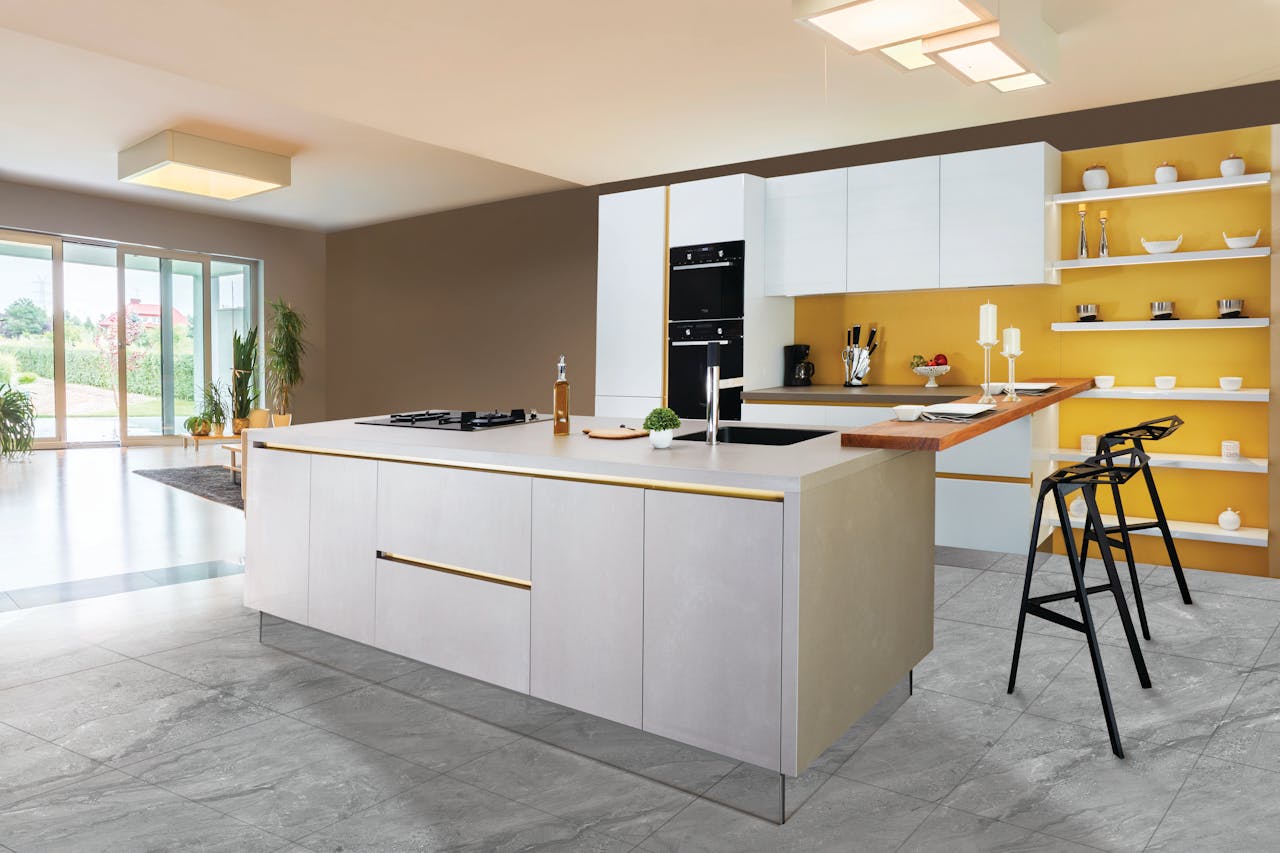If you’re keen on transitioning to a more plant-based diet, you’re likely aware of the numerous benefits it promises – a healthier body, a leaner physique, and reduced carbon footprint. However, maintaining a vegetarian or vegan diet may pose some challenges in terms of meal preparation and food organization. That’s where the layout of your kitchen comes in. A well-organized kitchen can make it easier for you to stick to your diet plan and achieve your weight goals.
Understanding a Plant-Based Diet
Before diving into the kitchen layouts, let’s first establish what a plant-based or vegan diet is and what it entails.
Topic to read : What are the advantages of having a built-in oven with steaming capabilities for weight loss?
A vegan diet is a form of vegetarianism that eliminates all animal products, not only meat but also dairy, eggs, and anything else derived from animals. On the other hand, vegetarians may still consume some animal products, such as dairy or eggs. A plant-based diet primarily focuses on foods sourced from plants. This doesn’t mean you’re vegetarian or vegan and never eat meat or dairy, but rather you’re proportionately choosing more foods from plant sources.
One common misconception about vegan or vegetarian diets is the supposed lack of protein. However, the truth is plenty of plant-based foods are rich in protein. For instance, a single cup of lentils can provide about 18 grams of protein. Similarly, foods like quinoa, tofu, and chickpeas are abundant in protein, proving that meat isn’t the only protein source.
Also to read : How can the inclusion of a breakfast nook in your kitchen aid in your slimming journey?
Planning Your Vegan or Vegetarian Diet
To start your vegan or vegetarian diet, it’s crucial to develop a healthy meal plan. The key is to ensure that you’re getting enough protein, fiber, vitamins, and other essential nutrients. It’s also a good idea to monitor your calories intake, especially if weight loss is your goal.
A typical day’s meal might include a bowl of oatmeal topped with fresh fruits and nuts for breakfast, a hearty salad or a lentil soup for lunch, and a quinoa-stuffed bell pepper for dinner. You can snack on hummus and veggies, fresh fruits, or a handful of nuts in between meals to keep your energy levels up.
Remember that variety is crucial in a vegan or vegetarian diet. You want to eat different types of fruits, vegetables, whole grains, and legumes to ensure you’re getting a wide range of nutrients.
The Importance of Kitchen Layout
Now that we’ve discussed the basis of a vegan or vegetarian diet, let’s talk about the role of the kitchen layout. Your kitchen should be a space that encourages healthy eating habits. The way your kitchen is structured can significantly impact your dietary choices and habits.
Think of your kitchen as your command center. It’s where you prepare your meals, store your food, and often where you eat. Thus, it’s vital to create a space that is functional, efficient, and aligns with your diet goals.
Kitchen Layouts for Efficient Meal Preparation
The first step towards an efficient, diet-friendly kitchen is to have a clear and practical layout. Your cooking and preparation areas, refrigerator, and pantry should be easily accessible. This will help you save time when preparing your meals, making the process less stressful and more enjoyable.
Consider the ‘kitchen triangle’ layout, which positions the refrigerator, sink, and stove in a triangular pattern. This layout is said to be the most efficient as it saves steps when preparing meals. Having a specific area for prepping fresh produce, like a large cutting board or a special sink, can also make meal preparation easier and faster.
Organizing Your Pantry and Refrigerator
A well-organized pantry and refrigerator can make sticking to your diet much easier. Dedicate specific areas in your pantry for different food groups. For example, designate one shelf for whole grains, another for legumes, and so forth. This will not only make cooking more efficient but also allow you to quickly assess what you have and what you need to restock.
In the refrigerator, keep fruits and vegetables at eye level to remind yourself to eat them. Store nuts and seeds in clear containers so you remember to add them to your meals for extra protein.
Remember, the goal is to make healthy, plant-based foods the easiest option to reach for when you’re hungry. The less effort it takes to prepare and eat healthy foods, the more likely you’ll stick with your vegan or vegetarian diet, helping you achieve your weight loss goals.
Incorporating Plant-Based Foods Into Your Meals
Integrating plant-based food into your meals can be a fun and creative process. As a vegetarian or vegan, it’s crucial to make your meals as appealing and diverse as possible. This way, you’re not only getting the nutrients you need, but you’re also keeping your taste buds intrigued.
A typical day’s meal could start with a breakfast of oatmeal which can be topped with fresh fruits, seeds, and a sprinkle of nutritional yeast for an added cheesy flavor. For lunch, you can have a hearty lentil soup or a colorful salad loaded with veggies. Dinner can be as fancy as quinoa-stuffed bell peppers or a pasta dish made with whole grain noodles and a rich sauce of pureed tomatoes, garlic, and olive oil. If you fancy a snack in between meals, reach for a bowl of hummus and veggies, a piece of fruit, or a handful of nuts.
Remember to use a wide range of fruits, vegetables, whole grains, and legumes in your vegan meal. Also, don’t forget to add some healthy fats in your vegetarian diet, like olive oil and peanut butter. These not only enhance the taste of your meals but also provide essential fatty acids.
Maintaining a Vegetarian or Vegan Slimming Diet
Once you’ve planned your meals and organized your kitchen, the next step is maintaining your vegetarian or vegan diet. This is where discipline and commitment come into play. However, if your kitchen layout supports your diet and your meals are well planned and delicious, sticking to your diet becomes less of a task and more of a lifestyle.
Keep a close eye on your calories intake if you’re trying to lose weight. While plant-based diets are generally lower in calories, it’s still possible to overeat. Remember that weight loss involves consuming fewer calories than your body burns, regardless of where those calories come from.
Try to incorporate exercise into your routine. Combining a plant-based diet with regular physical activity can significantly enhance your weight loss efforts.
Conclusion
Adopting a vegetarian or vegan diet requires willpower, planning, and a well-organized kitchen. By understanding what a plant-based diet entails, planning your meals around plant-based foods, and organizing your kitchen to support your diet, you can successfully transition to a healthier lifestyle and achieve your weight loss goals.
Always remember that the journey to a healthier you is not a sprint, but a marathon. The key to success is making small, sustainable changes that you can maintain in the long run. So, take the first step today towards a healthier, leaner you by planning your meals, organizing your kitchen, and adopting a plant-based diet. The benefits of a healthier body, reduced carbon footprint, and a leaner physique await you.






